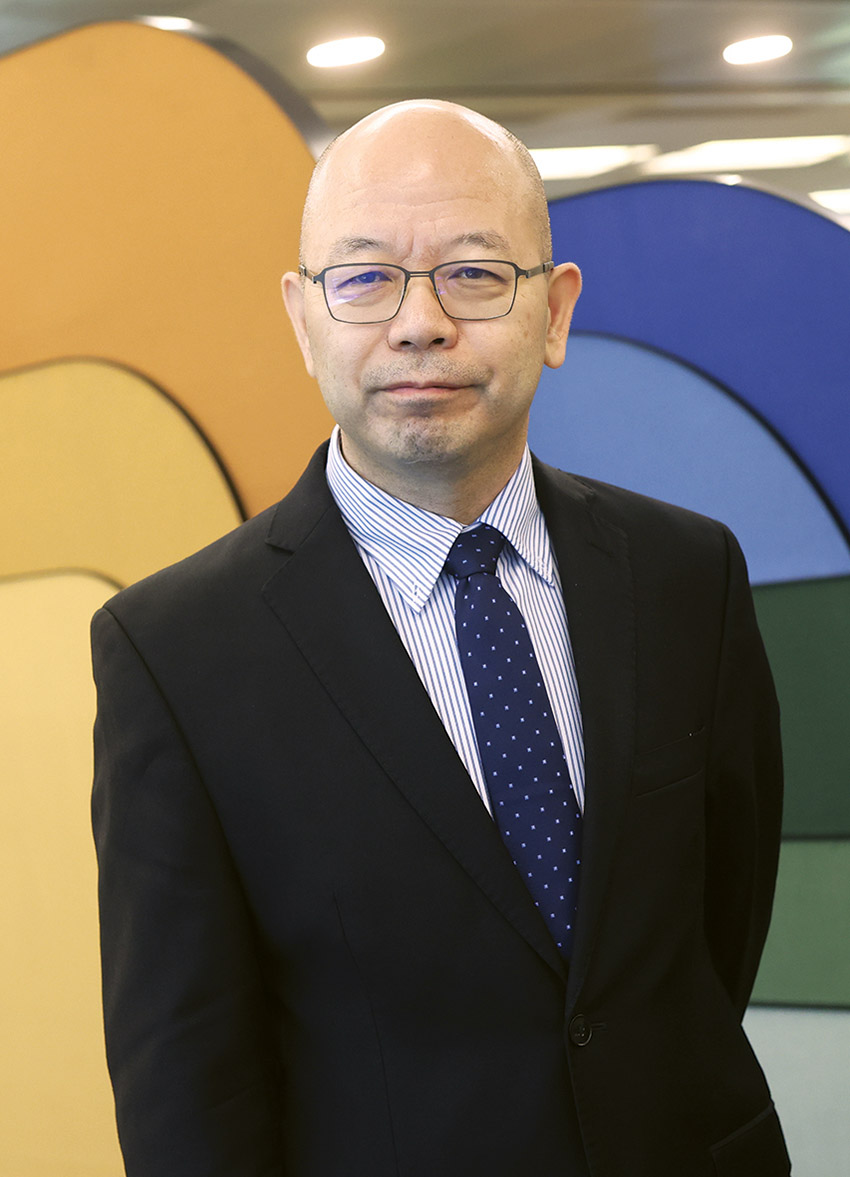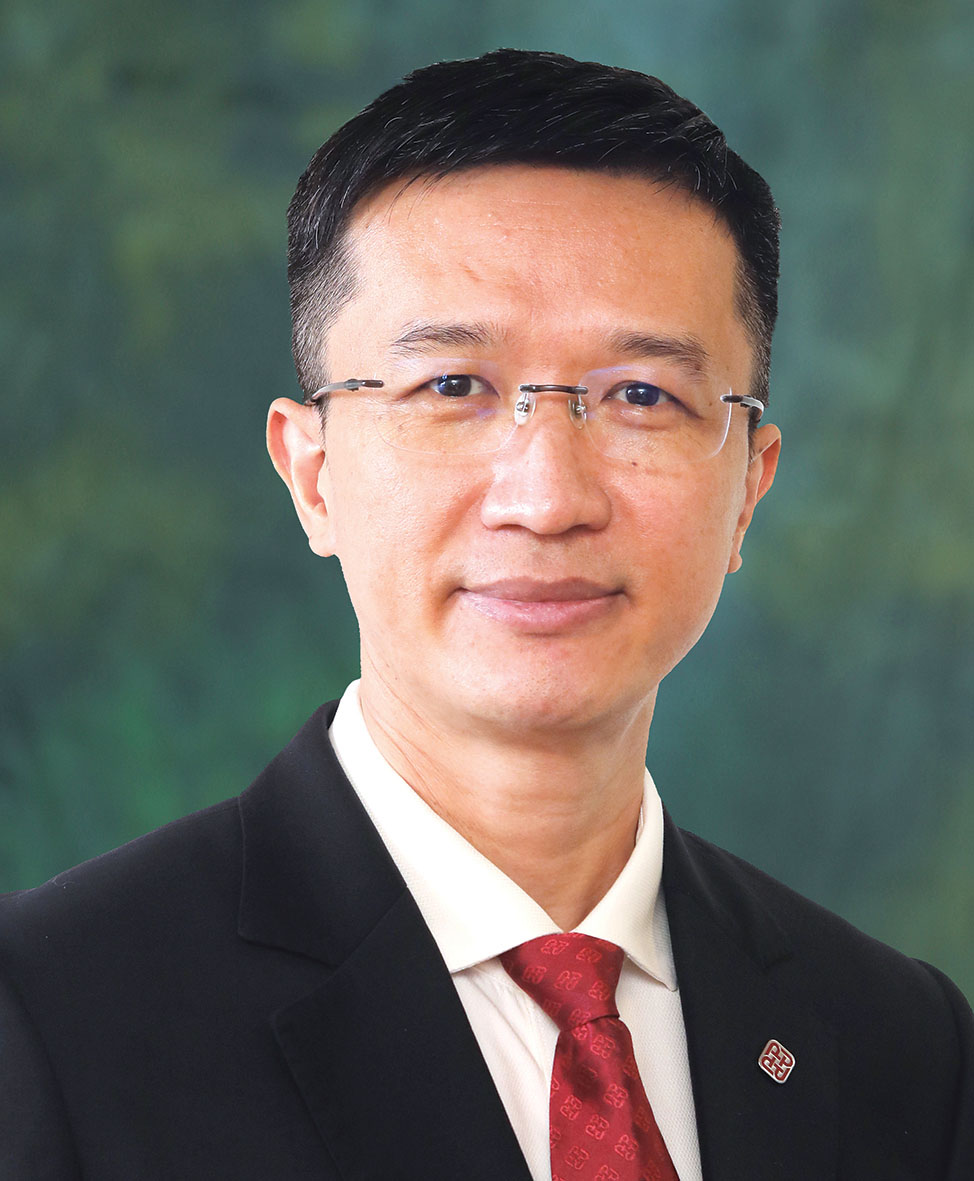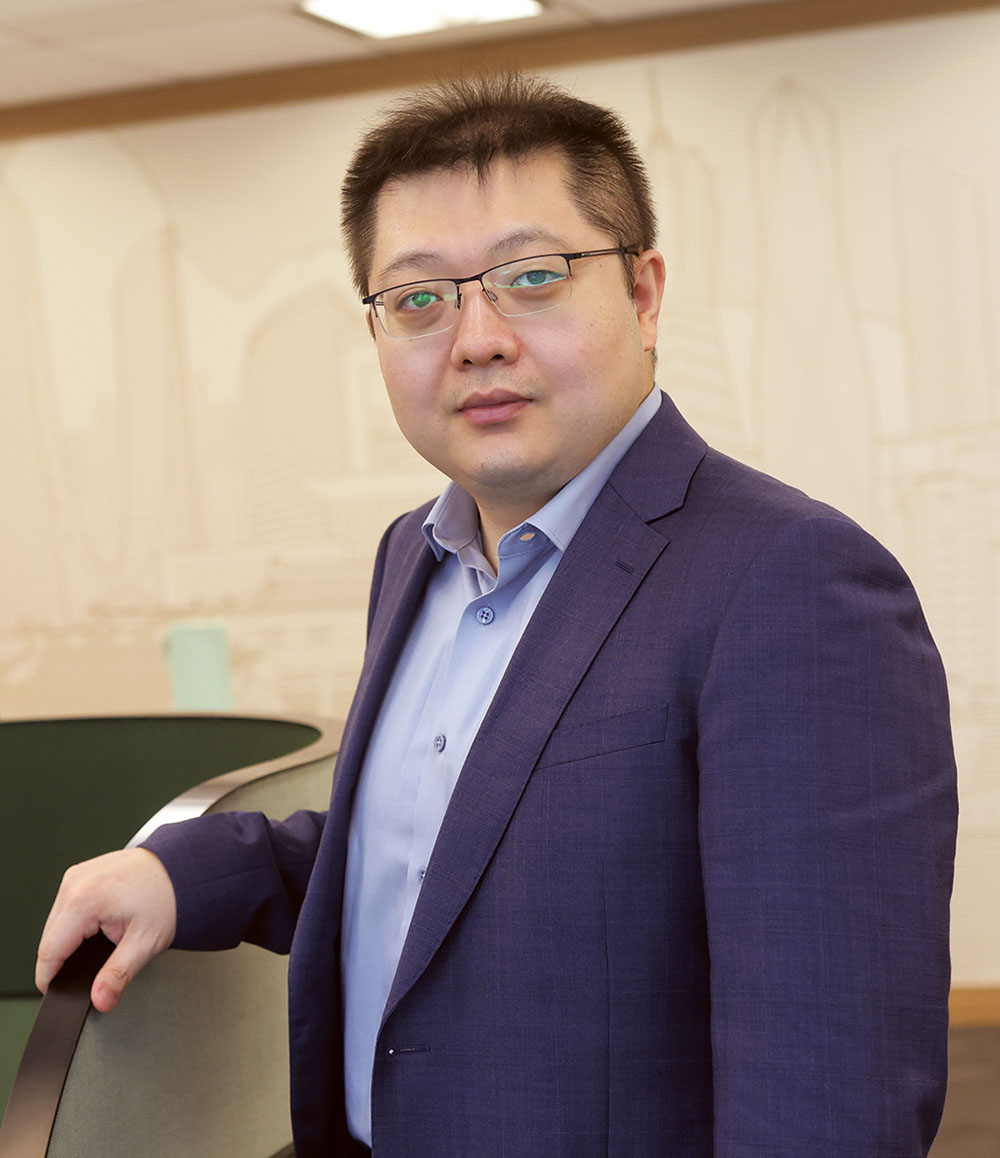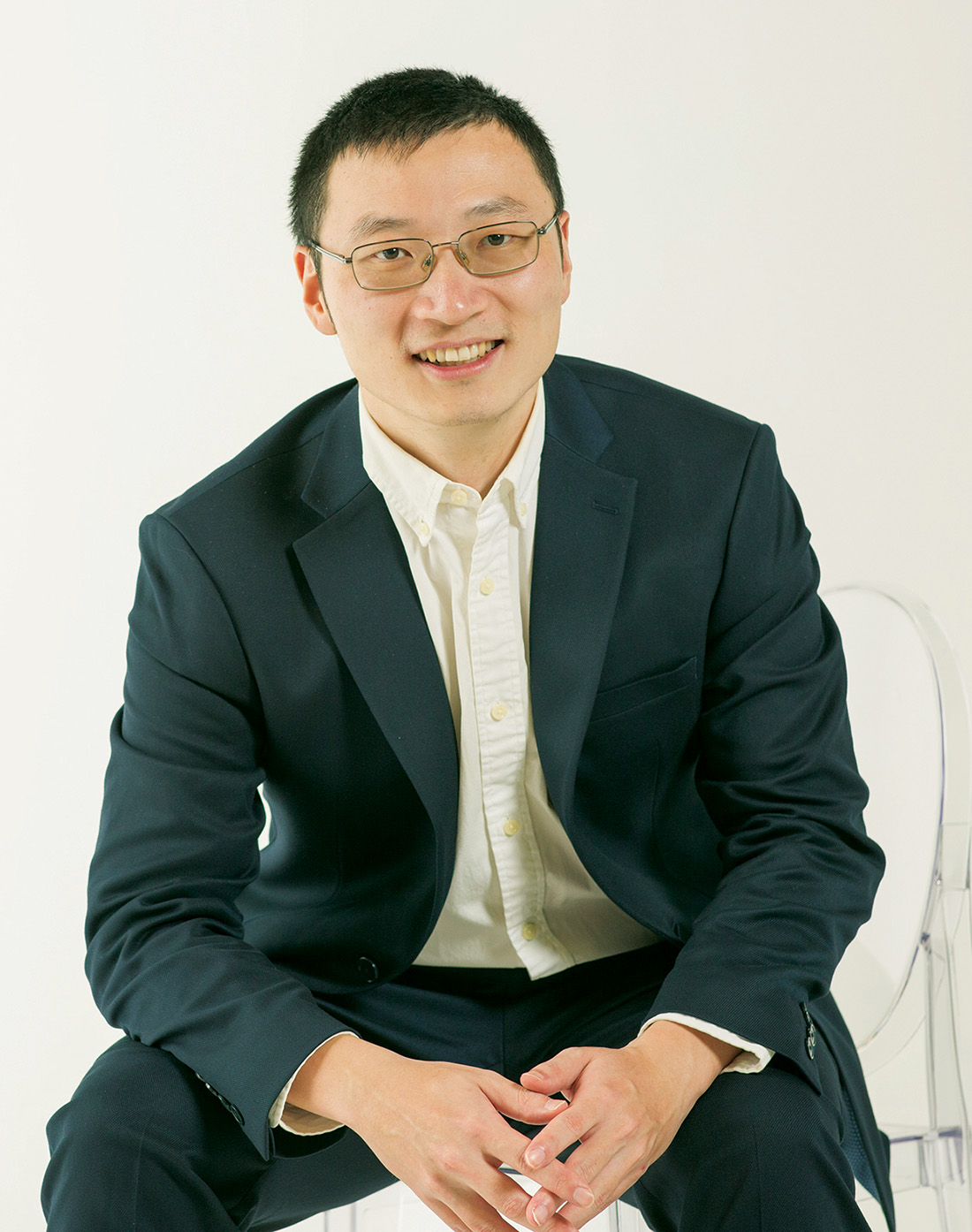Some of Hong Kong’s brightest scientific minds have come together to help the nation’s lunar explorations scale new heights, and lift the city’s aerospace aspirations off the ground. Luo Weiteng reports.

Editor’s note: The burgeoning NewSpace economy in Hong Kong represents an exciting frontier of innovation, investment, and professional services. The second article in this series tells how the city steps forward with its first full-system lunar project.
Hong Kong-based scientist Professor Wang Zhe’s childhood dream of becoming a scientist and an astronaut might have seemed far-fetched until aerospace offered a rare convergence.
When he was asked to join the city’s lunar robotics team to contribute to the nation’s Chang’e 8 moon exploration mission scheduled around 2029, he felt it was more about rising to the occasion than receiving a personal invitation.
Wang’s path mirrors that of the Hong Kong Special Administrative Region which has long aspired to advance in frontier science while positioning itself centrally in the country’s strategic vision. Aerospace has emerged as a meeting point for these twin goals.
READ MORE: HK scientists developing robot for lunar research station
The scholar is among a constellation of the city’s scientific elite united in a shared endeavor to develop a multifunctional lunar surface robot with precise operation and wireless charging capability for the Chang’e 8 journey.
Hong Kong has stood steadfast behind the country’s decade-long lunar pursuits, quietly lending its strength to subsystem projects. “We’re now at the forefront, spearheading a full-system project that could be the largest aerospace initiative Hong Kong has ever participated in,” says Professor Yu Hongyu, co-director of the Hong Kong Space Robotics and Energy Centre (HKSRE).
Having collected the first-ever samples from the far side of the moon, China now sets its sights on the lunar south pole. The Chang’e 8 expedition aims beyond flags and footprints, reaching out across borders. A suite of 10 projects, from rovers to scientific instruments, will hitch a ride to the moon, with the China National Space Administration opening 200 kilograms of payload capacity for overseas cooperation.
Embodying openness at its finest, the multifunctional lunar surface robot, which takes up half of the payload space, brings together the SAR’s five leading universities with partners from the Chinese mainland and abroad. A project of this scale leaves no room for once-fragmented, stand-alone participation. For the first time, the SAR’s intellectual might has come under one roof, each helping to realize the same objectives.

Collaborative power
Wang is the principal investigator of the thermal control subsystem, safeguarding critical electronics from the blistering heat and frigid cold of the lunar surface.
At the lunar south pole, the sun hovers low, casting stark contrasts of light and shadow just meters apart. Leading the efforts at the Hong Kong Polytechnic University, Professor Wu Bo is in charge of the subsystem for enhanced visual perception and environmental sensing, aiming to give the robot “intelligent eyes”. An orchestration of ultra-sensitive imaging sensors, artificial intelligence-powered analysis and high-performance computing aims to enable the robot to read surroundings, chart routes and act with near real-time autonomy.
At the heart of the machine, Professor Duan Molong directs the development of its dual-arm manipulation subsystem. The design prioritizes a critical balance: achieving high precision and durability while remaining exceptionally lightweight and robust against space’s harsh conditions, including radiation, extreme temperatures, and vibration during launch. Beneath its future composite skin runs a layered control architecture where classical motion planning meets AI-driven perception, letting the robot see, grasp and operate reliably with minimal sensors.
Hong Kong is still learning the language of space — the city’s entire pool of hands-on aerospace talent barely reaches a hundred, far behind that of their mainland counterparts. While conceptual innovation thrives, local universities lack the engineering muscle and a launching pad to turn ideas into orbit. Practical implementation still hinges on collaboration with mainland institutions, says Yu.
Yet, the SAR is steering this signature project not by chance, but by design — built on patient work in frontier research and scientists striving for its emergence in aerospace innovation.
After years abroad, Wu returned to the SAR in 2009, the year the Chang’e 1 mission marked China’s first step toward the moon. His timely return was a prelude to his involvement in the Chang’e 3 mission that achieved a soft landing in 2013 — the first by any nation since 1976. Wu’s team lent its eyes to the moon by applying innovative topographic mapping and geomorphological analysis to help assess safe landing sites. In the years that followed, their work has woven into China’s unfolding adventures to the moon and further afield to Mars.
“As the missions advance, our presence in the country’s space exploration becomes more defined — a quiet but telling sign of the nation’s growing regard for Hong Kong’s scientific contribution,” says Wu.
Yu had watched from afar as Hong Kong’s scientific ambitions quietly gathered force. His homecoming, drawn by a desire to reunite with family, and an inner reckoning of where his work might truly belong, has since proven its worth. “Back home, I’ve found research resources far richer and better than what I had in the United States,” says Yu, who joined the Hong Kong University of Science and Technology on New Year’s Day in 2018.
Having spent nearly two decades across the Pacific, Yu has been a true witness to the mounting institutional hurdles and identity dilemmas confronting Chinese scientists. This was despite many Chinese faces within the US aerospace system, and his own standing as the principal investigator on projects supported by the US National Aeronautics and Space Administration and other institutions.
Science may aspire to be without borders, but scientists carry the weight of origin. Yu encountered this truth anew during a recent meeting with Chan Ching-chuen — Hong Kong’s first academician at the Chinese Academy of Engineering. The prominent scientist hailed Hong Kong’s leading role in the multifunctional lunar surface robot as a “source of pride”, affirming that patriotism must be “the soul of the work”.

Industrial synergies
Duan heard the same call. For an academic whose research bridges hardware and software, the pull of home grew as the “hollowing out” of US manufacturing made ideas harder to materialize. His search for a place where making still matters led him back to Hong Kong, and into the orbit of the Guangdong-Hong Kong-Macao Greater Bay Area, which he sees as a rising magnet for the finest minds with an engineering psyche.
“The Bay Area’s industrial breadth means ideas don’t just stay in labs, they find pathways to scale,” says Duan. “Combined with Hong Kong’s research excellence and policy consistency, this creates a full-spectrum ecosystem that positions the region beyond comparison on the world stage.”
Ambitions for the farthest frontiers of space require more than vision. Duan is no stranger to promising ideas from US and European peers faltering at the theoretical stage, stranded by fragmented funding and short-term commitments.
In Hong Kong, it’s a different story. Years of sustained, structured policy support have enabled the local scientific community to cultivate broad capabilities — credentials now finding strategic relevance in space exploration.
Backed by a HK$4.5 million ($578,320) grant from the Innovation and Technology Commission, Yu led a project from 2022-24 in developing a mobile robotic arm with fingertip tactile sensing, allowing machines to “feel” and perform assembly tasks with human-like precision, and whose manipulation techniques can extend from the Earth to the moon.
Likewise, Duan worked with Bay Area companies to design a brick-laying robot that follows the same logic of operation from construction sites to the Chang’e 8 mission, where Chinese scientists plan to 3D-print bricks using lunar soil to build the International Lunar Research Station (ILRS), a permanent outpost near the lunar south pole envisioned for the 2030s.
“There’s a continuous thread that runs from years of SAR-backed innovation and Bay Area collaboration to the multifunctional lunar surface robot we see today,” Yu says.
“Many local scientists may lack experience in aerospace projects. Yet, with hard-earned expertise and transferable know-how behind us, Hong Kong is ready to leave its mark on the nation’s aerospace future,” Wang says.

Yu, who heads the initiative, frames it as “a groundbreaking first” for Hong Kong on every front — and just the prologue to a greater spacefaring odyssey.
China’s voyage into space began under a crucible of sanctions, weathered the chill of isolation and reshaped it into a tale of global leadership and collaborative vision. The Chang’e 8 mission represents a stepping stone to the ILRS, opening the door for global science to co-author the future of lunar discovery.
In a sky divided by narrowing avenues of cooperation, China’s call for shared progress finds its clearest echo in the SAR. Here, Yu describes Hong Kong, having the best of both worlds, as one of the nation’s windows, bearing the ability to connect in an era of closing gates.
Such a mission of the times found tangible expression earlier this year with the founding of the HKSRE under the InnoHK Research Clusters — a structured, targeted response to the city’s long-standing hurdles in space exploration. For years, efforts had been scattered across individual local universities and researchers, with no central coordination or engineering team capable of turning ideas into concrete projects.
Anchored by the multifunctional lunar surface robot, the HKSRE casts its sight afar.
“Hong Kong’s cosmic journey is closely intertwined with that of the Chinese mainland and the wider world. Yet, it must also take root on its shores, bridging the ‘last mile’ between national backing and local engineering strength,” Yu says. This includes the setting up of supporting facilities, such as a lunar test field at Hong Kong Science Park by mid-next year, replicating light, terrain and reduced gravity to create near-real mission scenarios for robots. Beyond bricks and mortar, he envisions cultivating a space engineering team of at least 500 to 1,000 specialists — an essential force to lift Hong Kong’s aerospace aspirations off the ground.

Aerospace aspirations
Hong Kong’s aspirations are written in the stars in Chief Executive John Lee Ka-chiu’s latest Policy Address. The global aerospace economy is forecast to reach $1.8 trillion by 2035.
Wu, deputy director of the HKSRE, sees the aerospace economy as a “promising lever” for Hong Kong’s future. He pictures the city’s islands and waters as stages for rocket launches, where visitors can marvel at the spectacle of liftoff and the dawn of a new tourism frontier. Next on the horizon could be space station tourism, with China’s Tiangong among the options. “This is not out of reach,” he believes. “In the coming years, or within a decade, we can make it happen.”
Beyond tourism, the true weight of the aerospace economy lies in the technologies it spins off into the real world. The enhanced vision and 3D sensing systems under Wu’s charge are already feeding into Hong Kong’s smart city plans — from night-time autonomous driving to digital city modeling.
Wang’s goal is to introduce space-based radiative cooling technology into Hong Kong’s buildings, which are responsible for 90 percent of the city’s energy consumption, in an effort to propel the SAR closer to carbon neutrality.
ALSO READ: Gazing at space
Duan is betting on Hong Kong’s financial edge to monetize the ground-based information and data enabled by satellite technologies, such as weather monitoring, carbon tracking and landslide early warnings.
Looking ahead, Duan believes the multifunctional lunar surface robot will pioneer a new model of space services. Its wireless charging capability, possibly the first of its kind, positions it as a third-party platform for cross-border collaboration and commercial engagement.
After clearing a third-party design review this July, the project is now advancing through the prototyping stage, racing toward the 2029 launch.
In a city long known for bridging worlds, Yu sees Hong Kong stretching skyward — binding Earth to orbit, reality to imagination. Step by step, within a decade, it will rise as the world’s “superconnector” in commercial space, with an aerospace industry Yu expects will hit HK$10 billion.
Hong Kong does not merely claim its future — it is claiming its place among the stars.
Contact the writer at sophialuo@chinadailyhk.com


